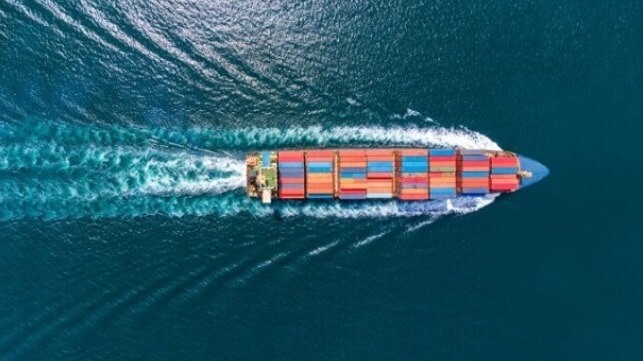MSC and Others Calls for Changes as IMO’s Carbon Intensity Rules Start

The International Maritime Organization (IMO) is marking November first highlighting that its new carbon intensity rules which are coming into effect are both an important milestone as well as a building block in the efforts to decarbonize the shipping industry. While the industry says it supports the objectives and will comply with the IMO’s Carbon Intensity Index (CII) regulations, they however are also increasing calls for adjustments to the new rules.
The amendments to the MARPOL regulations became effective on November 1, 2022, building on efforts first launched in 2011 and the framework established four years ago. The latest amendments for the first time apply the energy efficiency ratings not only to newbuilds but are extended with an “Energy Efficiency Existing Ship Index” (EEXI) which will be used to calculate the carbon intensity indicator.
“Decarbonizing international shipping is a priority issue for IMO and we are all committed to acting together in revising our initial strategy and enhancing our ambition,” said Kitack Lim, IMO Secretary-General. “These latest amendments build on energy-efficiency measures which were first adopted in 2011 and strengthened since - the CII and EEXI measures represent the next stage in our work to meet the targets set in the Initial IMO GHG Strategy.”
The requirement to begin calculating the EEXI and the CCI certification become mandatory on January 1, 2023. The first annual reporting will be completed next year with initial CII ratings given in 2024.
“On top of a range of design and technology efficiency measures, we have assessed that it will not be possible to achieve the required standards without a new program of voyage optimization that includes elements such as speed reductions and injecting additional ships into the network,” said Giles Broom, a spokesperson for MSC responding to media inquires. “Just-in-time port call optimization will also play a role.”
Many of the leading companies in the maritime industry have expressed concerns and highlighted specific elements of the regulations which they believe need to be adjusted. Both Maersk and MSC, for example, point out there is no distinction based on cargo or if a vessel is operating at less than capacity. Also, vessels operating shorter distances are disadvantaged in the calculation. Many of the carriers, and especially the cruise industry, also point out that a ship that spends a lot of time in port will have a distorted performance calculation.
“The calculation methodology should be revised to avoid unintended consequences,” said MSC outlining some of its concerns. “It would be far better to have an operational indicator that would reward more productive ships.”
While some of the unintended consequences might hurt individual ships, and possibly contribute to early retirement and scrapping of more vessels, some elements of the rules might also provide a boost to declining container freight rates in 2023 and beyond while also contributing to the dramatic increase in energy shipping rates. Less efficient vessels are expected to slow steam to achieve a better rating.

that matters most
Get the latest maritime news delivered to your inbox daily.
“CII is expected to absorb about 7-10 percent of capacity across the global container fleet,” predicts Broom based on MSC’s analysis of the regulations. He expects changes in deployment patterns as the carriers would to balance the CII standards with the needs of customers.
Near term, MSC notes that there are no net zero CO2 emission fuels available at scale. The world’s largest container carrier promises to employ new designs and technologies to modernize its fleet, by retrofitting old vessels and incorporating new technologies, as it seeks to make energy efficiency performance improvements.
